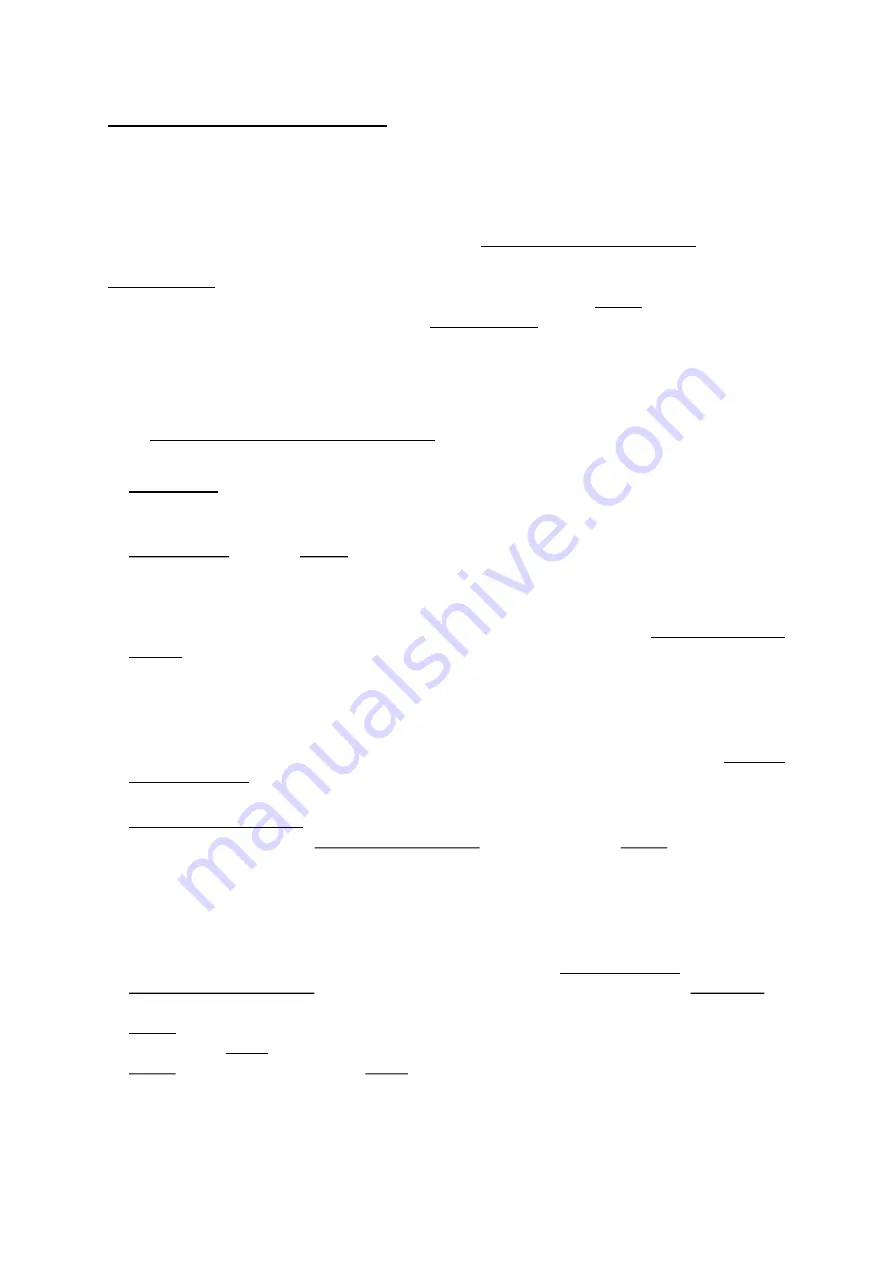
33
Softwood, Used wood and Treated wood
Burning softwood, previously used wood and treated wood (railway sleepers, telegraph poles, off
cuts of plywood or chip board, pallets, etc.) quickly clogs and blocks the flue ways (soot, tar,) etc,
pollutes the environment (pollution and smell) etc, and cause the fire to burn too quickly and
overheat.
Softwood, previously used wood and treated wood can
eventually cause a chimney fire
.
Prohibited fuel
:
Plastic bags and any form of bituminous coal or petroleum-based coke.
Do not
use the appliance as
an incinerator or use any liquid fuels.
This is
very dangerous
and may damage the product and
pollute the atmosphere.
Smokeless fuels.
All other fuels.
4.3
General use & operation
Important
The Panther 5 SE is approved as an intermittent operating appliance as such it is strongly
recommended
that you
do not
leave the stove alight at night. It harms the environment and
constitutes extremely poor use of the wood fuel, as the gases in the wood fuel do not ignite at the
low temperature but settle as soot (unburned gases) in the chimney and stove, this can cause
damage to the chimney flue and stove. Extreme conditions, such as poor draught in the chimney,
large quantities of wood or wet wood, may, in the worst-case scenario,
cause an explosive
ignition
.
When firing in the summer period, when there is minimal need for heat, the combustion will be
poor due to low air settings whilst controlling the fire, this will cause the gases in the wood fuel to
not ignite at the low temperature but settle as soot (unburned gases) in the chimney and stove,
this can cause damage to the chimney flue and stove. Extreme conditions, such as poor draught in
the chimney, large quantities of wood or wet wood, may, in the worst-case scenario,
cause an
explosive ignition
.
After a prolonged shut-down period the stove and chimney system should be checked by an
approved and competent
stove installer such as Hetas registered (England & Wales) or equivalent
for other nations, and an
approved and qualified
chimney sweep to
ensure
that there is no
blockage. For example, a bird may have nested at the top of the chimney.
If you fire the stove using wet wood, a lot of the fuel’s thermal energy will be spent forcing the
water out of the wood, without releasing any heat to the stove. This incomplete
combustion
results in a layer of soot being left in the stove, pipe, and chimney. this can cause damage to the
chimney flue and stove. Extreme conditions, such as poor draught in the chimney, large quantities
of wood or wet wood, may, in the worst-case scenario, cause an
explosive ignition
.
Never overload the firebox
. The maximum amount of fuel specified in this manual
should not
be
exceeded, overloading can be dangerous, cause excess smoke and damage the stove.
Ensure
the fuel does not obstruct the tertiary air outlet holes to the rear of inside of stove.
The fuel to be
below
all tertiary air outlet holes.
Ensure
that all fuel is placed so as
not to
touch and obstruct the glass and door when closed, all
fuel to be loaded behind the banking bar, ensuring that all fuel does not project passed the
banking bar.






























